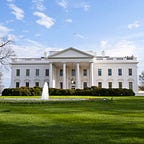Behind the Lens: Photographing the President at a Federal Prison
by Pete Souza, Chief Official White House Photographer
A few months ago, I accompanied President Obama as he became the first sitting president to visit a federal prison in El Reno, Oklahoma.
It was not my first time to visit a federal prison. Nor was it the President’s first visit to a prison.
When I was a graduate student at Kansas State University (a long time ago!), I visited a federal prison in Leavenworth, Kansas. The college newspaper was doing a story on the criminal justice system, and I was given access to photograph at the prison for a day.
It was an amazing experience.
As a law student at Harvard University, the President visited a state prison in Walpole, Massachusetts to play basketball with the Black Law Students’ Association team against the inmate’s team.
This time, the circumstances were much different.
Security was extremely tight. In addition to touring the El Reno Federal Correctional Institution, the President sat down and spoke with six inmates about the criminal justice system. That conversation was filmed as part of a VICE documentary called “Fixing the System.” You can tune in to the special on HBO this Sunday, September 27 at 9:00–10:00 p.m. ET/PT.
“I met with a group of prisoners, and what was striking was the degree to which so many of these young people…had been serving time for mistakes they had made during their youth…
They weren’t so different from me.
“I made mistakes when I was young. I didn’t always follow a straight path. The primary difference between me and them was I had more of a cushion. I had second chances. In some cases, I had resources or I was in an environment in which when I made a mistake as a teen, that I could recover from it.
“And these young people didn’t have any margin for error. And that notion that as a consequence of youthful mistakes they could end up in a lifelong cycle of crime, where the prospect of them being able to recover and reenter society with gainful employment and the ability to be part of their children’s live and to be citizens appear remote — the notion that that’s how we think our criminal justice system should work, that that should be the end result, there’s something un-American about that.
This is a country that believes in second chances.
And right, now we’ve got millions of people who aren’t getting it. So, we’ve got to make sure that our criminal justice system works.”
— President Obama during a screening of “Fixing the System”
